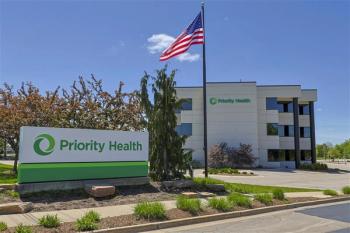
Kimberly Westrich Talks the Hidden Costs of 340B to Employers
Kimberly Westrich, MA, of the National Pharmaceutical Council, explains how the 340B program is linked to increased drug spending and the hidden costs associated with it.
There are growing costs of the 340B program for employers and workers, despite misconceptions that the program does not cost anyone anything, says Kimberly Westrich, MA, of the
The program has garnered increased scrutiny in recent years. A
The New York Times similarly reported on how Bon Secours Mercy Health has allegedly misused the 340B program by utilizing a "hollowed-out hospital" in a poor neighborhood to be eligible for the program and turn huge profits.2
In 2017, the Trump administration announced a finalized rule that would cut reimbursement to 340B hospitals with the rule taking effect January 1, 2018.3 However, opponents to the rule ultimately prevailed when their challenge made its way to the Supreme Court, which ruled unanimously that the decision to reduce payments was unlawful.4
Transcript
Research by the National Pharmaceutical Council shows that the 340B program is creating a 4.2% increase in drug costs for self-insured employers and their employees. Can you explain how this occurs?
There's a lot that's misunderstood about the 340B program. It's grown large in recent years and that growth has allowed the program to go far beyond its original intentions. And it may be enabling profiteering under the guise of charity care. One of the concerns that patients should be aware of is that discounts are not often being passed on to them at the pharmacy counter. This additional
Hospitals may offer 340B revenue sharing agreements to large employers in their area. Are there hidden costs that may be overlooked in these agreements?
So, there's a couple of things that are happening here. In addition to sharing revenue, there is also a shift of the employers workers into the hospital site of care. The mechanics that are at play here are first that there's a loss of rebates to the employer for products that are purchased with a 340B discount. But the bigger hidden cost is the fact that as the employees shift to the site of care, all of the services provided at that hospital have a marked-up cost. And that's been borne by the employers and their workers. And when you look at the model that IQVIA put together, you realize that the 340B hospital is the only group that's actually benefiting in this situation. Not only are employers and their employees losing, but so are the pharmacy benefit manufacturers, the manufacture, the non-hospital providers; [they] are all losing in this situation. So those revenue sharing agreements may sound promising on the surface, but there are absolutely hidden costs that the employer and other stakeholders should be aware of.
References
1. Desai DM, McWilliams JM. 340B Drug Pricing Program and hospital provision of uncompensated care. Am J Manag Care. 202;27(10):432-437. doi: 10.37765/ajmc.2021.88761
2. Thomas K, Silver-Greenberg J. How a hospital chain used a poor neighborhood to turn huge profits. New York Times. September 24, 2022. Accessed May 7, 2024.
3. Joszt L. CMS proposes payment rate change for 340B program. The American Journal of Managed Care. July 17, 2017. Accessed May 7, 2024.
4. Joszt L. Supreme Court unanimously rules in favor of hospitals in 340B decision. The American Journal of Managed Care. June 15, 2022. Accessed May 7, 2024.
Newsletter
Stay ahead of policy, cost, and value—subscribe to AJMC for expert insights at the intersection of clinical care and health economics.





























































